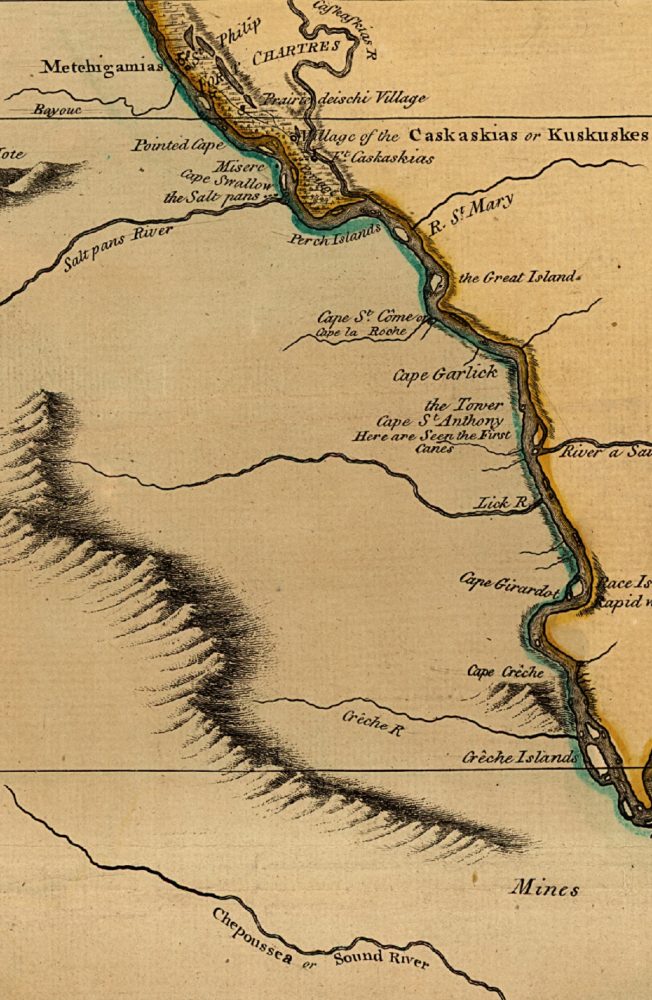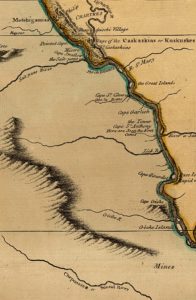Pays d’Illinois and Pays d’en Haut
French colonization leaves cultural traces in the Midwest
Published: March 1, 2020
Last Updated: June 1, 2020

Library of Congress
Detail of Course of the River Mississippi from the Balise to Fort Chartres, 1765.
French losses in the Seven Years’ War, British defeat in the American Revolution, and the fire-sale Louisiana Purchase brought the Illinois Country and much of the Upper Country into the United States, and settlers streamed into the new frontiers, displacing Native groups and diluting the relatively small French-descended populations. We may now pronounce the final S in “St. Louis” and forget that St. Cloud, Minnesota, is named for a wealthy Parisian suburb, but traces of French culture persist in pockets of these old French domains.
Place names like Minnesota’s elegant Lac qui Parle County or the more prosaic Frenchtown in Michigan reflect the early European settlement patterns. Small numbers of people speak distinct dialects of French in some of these areas—“Paw-Paw” or Illinois French in Missouri and Muskrat French around Lake Erie. (This group allegedly got its unusual name from a special dispensation allowing them to eat muskrat during Lent; lest ye judge, think of outsiders’ reactions to sucking crawfish heads.) French heritage festivals dot the civic calendars of these regions, and the Illinois Country’s creole fiddle tradition has received support from the Louisiana Endowment for the Humanities’ sister councils in Missouri and Illinois. French influences are woven throughout the culture of the United States—and more than just Louisianans are fiers d’être français.
